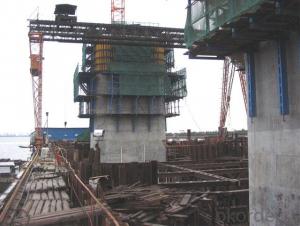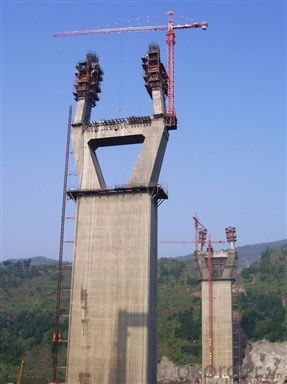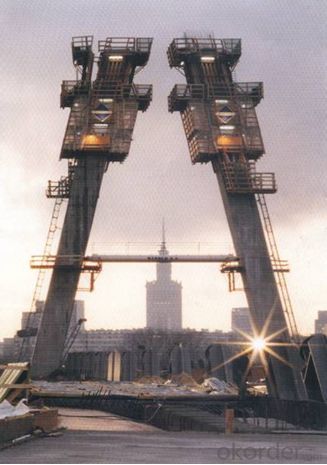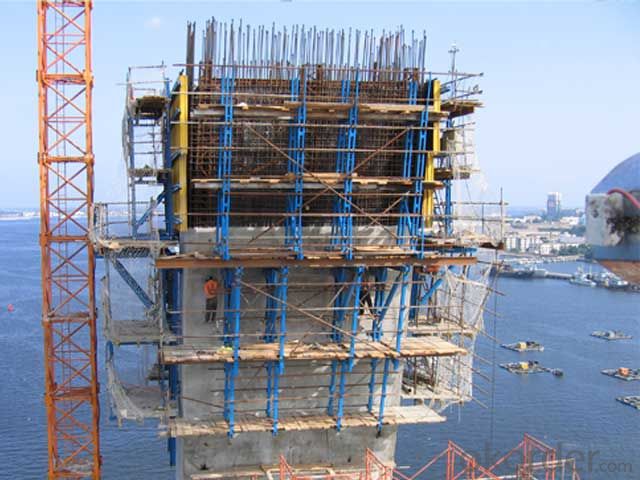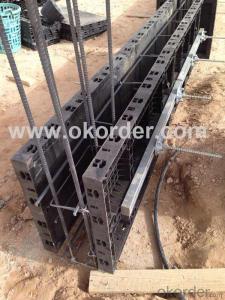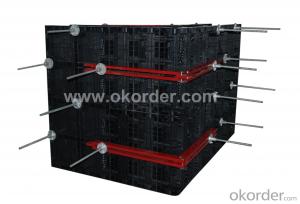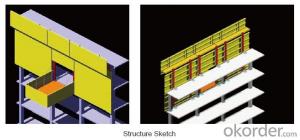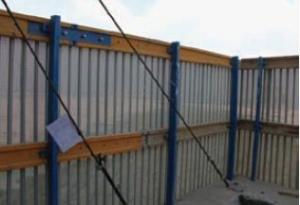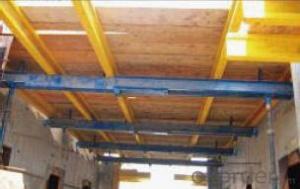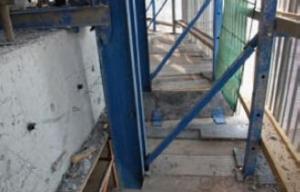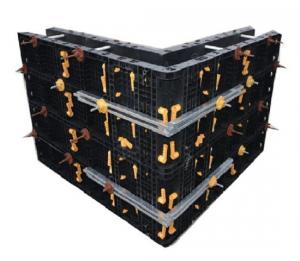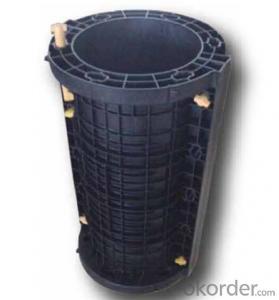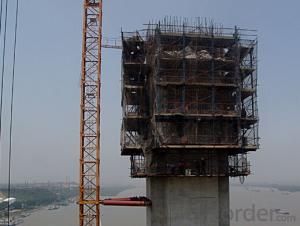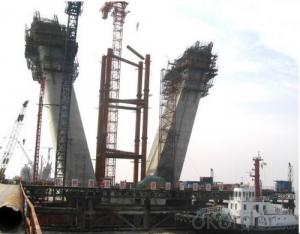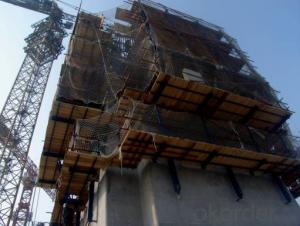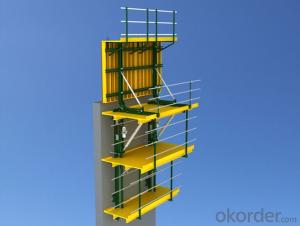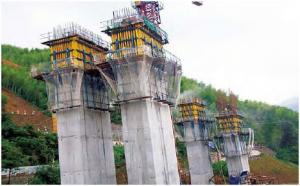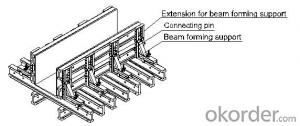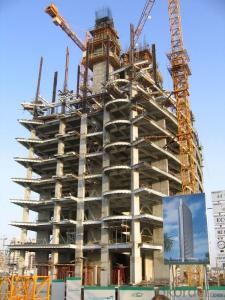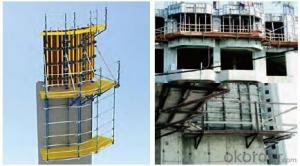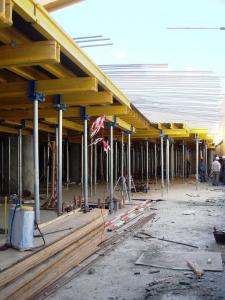Hydraulic Auto-climbing Formwork from China
- Loading Port:
- Tianjin
- Payment Terms:
- TT OR LC
- Min Order Qty:
- 50 m²
- Supply Capability:
- 10000 m²/month
OKorder Service Pledge
OKorder Financial Service
You Might Also Like
Product Introduction
The power of the auto-climbing formwork is the hydraulic system, which includes the oil cylinder and commutators. Through the functioning of hydraulic system, the steel rail and bracket can climb up alternately,The commutators can control the climbing of the climbing rail and the bracket. The steel rail and the bracket can inter-climbing, so the whole system will climb up steadily. Cranes are not needed during the construction. It' s easy to operate, and climbing is fast and safe.
Product Characteristics
1. Perfect load bearing anchor system.
2. Crane-independent
3. One oil cylinder unit can lift 50KN.
4. The QPMX-50 system can climb not only vertically but also slantwise, and the forward or backward inclination can be up to 18 degrees.
5. The system can climb up wholly or separately. The climbing process is steady, synchronous and safe.
6 .The bracket does not come back to the ground until construction work is finished, and spacing for work is reduced while the bumping damage is almost completely prevented, especially for the plywood.
7.The error of structure construction is tiny and easy to correct.
8.The formwork can climb up by itself and cleaning work can be done in situ. The number of crane lifts are greatly reduced.
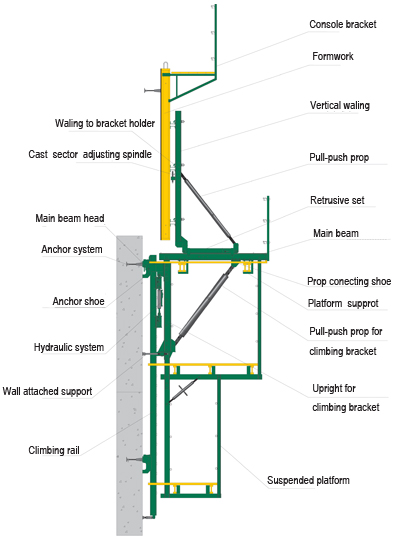
Climbing Process Introduction
1.Set up the formwork by wall-through tie-rods and pull-push props, embed anchors and do the first concrete pouring.
2. Remove the formwork after the first pouring and fix anchor shoes on the finished wall, lift the brackets and formwork to the right position, match the formwork and do the second pouring.
3.Lift formwork and brackets to the higher floor; fix climbing rail and hydraulic system.
4.Match the formwork to the right position and do the third pouring.
5.Strip the formwork and fix anchor shoes on the finished wall, then let the climbing rails climb.
6. Brackets climb up to the right position, then install suspended platform.
7.Match the formwork, do the concrete pouring, and proceed into the standard climbing stage.
- Q: How is the hydraulic support moving
- The hydraulic support is connected to the scraper conveyor by pushing the lever and the crosshead: pushing the jack extension, pushing the lever out, pushing the scraper conveyor forward a step, which is called pushing; pushing the jack to take, The board conveyor reacts on the stand, driving the carriage forward by a step, which is called a shift frame.
- Q: Climbing and floor scaffolding advantages and disadvantages
- The bolt tightening torque should not be less than 40N · m, and should not be greater than 65N · m; [1] 2) The bar at the node is eccentric, 3) The connection quality of the fastener joints is significantly affected by the quality of the fastener itself and the operation of the workers. (3) The connection quality of the fastener joints is significant.
- Q: What is a climbing frame?
- Climbing frame, also known as attached lift scaffolding, the equipment and equipment is the rapid development of the beginning of this century, a new scaffolding technology, construction technology in China has an important impact. It will be high operations into a low operation, the floating operations into the frame internal operations, with significant low-carbon, high-tech content and more economical, more secure, more convenient and so on.
- Q: Is the scaffolding scaffolding?
- Climbing frame, also known as lifting frame, according to its power source can be divided into hydraulic, electric, human hand pull and other major categories. It is developed in recent years, a new scaffolding system, mainly used in high-rise shear wall real estate. It can climb up or down along the building.
- Q: Climbing several, how is it running? And how much is the rental fee? Please explain in detail master! Thank you!
- Climbing frame, also known as lifting frame, according to its power source can be divided into hydraulic, electric, human hand pull and other major categories. It is developed in recent years, a new scaffolding system, mainly used in high-rise shear wall real estate. It can climb up or down along the building. This system makes the scaffolding technology completely changed: one is not to turn the shelves; the second is to remove the scaffolding of the dismantling process (after the assembly has been used to complete the construction), and not subject to height restrictions on the building, a great savings in manpower And material. And in the security point of view for the traditional scaffolding has a greater improvement. In the high-rise buildings with great development advantages.
- Q: The difference between climbing and sliding mode
- The difference between climbing and sliding molds: climbing a mold is to pour a template, lift the climbing frame, and then install a section of the template, pouring the construction. There is no relative movement between the template and the pouring concrete. The lower concrete is removed after solidification. Is the process of pouring, the concrete has not yet solidified, it will continue to lift or move the template, so that the formation of the template and pouring between the concrete sliding.
Send your message to us
Hydraulic Auto-climbing Formwork from China
- Loading Port:
- Tianjin
- Payment Terms:
- TT OR LC
- Min Order Qty:
- 50 m²
- Supply Capability:
- 10000 m²/month
OKorder Service Pledge
OKorder Financial Service
Similar products
Hot products
Hot Searches
Related keywords
